
Το μηχανήμα για την αποστολή τηλεφωτογραφιών του καθηγητή Arthur Korn (1911). Φωτ. Otto-Nemnich-Verlag.

Ο καθηγητής Arthur Korn.
Καθηγητής στο Πανεπιστήμιο του Μονάχου και κάτοχος από το 1914 της έδρας της Φυσικής στο Τεχνικό Πανεπιστήμιο του Βερολίνου, ο Arthur Korn καθαιρέθηκε από τη θέση του το 1935 λόγω της εβραικής του καταγωγής και αναγάστηκε να διαφύγει στις Ηνωμένες Πολιτείες.

Εξώφυλλο του γαλλικού περιοδικού Je sais tout (18-04-1907).

Οι πρώτες φωτογραφίες που στάλθηκαν με το σύστημα του καθηγητή Arthur Korn. Από άρθρο της εφημερίδας New York Times (24-02-1907) : "Sending Photographs by Telegraph". Δημοσιεύεται ολόκληρο παρακάτω.
A picture of President Fallieres Sent from the Office of Illustration, Paris, Over a Wire Running to Lyons and Back Again. On the the Left is the Transmitter. The Picture is Being Received on the Right. | Prof. Korn in His Laboratory, Beside His Telephotographic Apparatus. No. 1. Photograph of Prof. Korn. No. 2. The same after trnamsission 600 miles by wire from Munich to Nuremberg. No. 3. The Kaiser's photograph transmitted over the same distance. Nos. 4 and 5. A portrait before and after its transmission through a resistance of 12,000 ohms—equivalent to 2,500 miles. |

"Ο εφευρέτης της τηλεφωτογραφίας Arthur Korn και ο συνεργάτης του κ. Will φωτογραφήθηκαν στις 24 Νοεμβρίου στο εργαστηριό τους μπροστά από ένα μηχανημά μετά την υπογραφή ενός συμβολαίου που παραχωρούσε στην L' Illustration το μονοπώλιο της χρήσης της τηλεφωτογραφίας για τη Γαλλία".

Οι πρώτες δοκιμές αποστολής φωτογραφιών και κειμένων.

Το 1923, ο Arthur Korn κατάφερε να στείλει τη φωτογραφία του Πάπα Pie XI από τη Ρώμη ώς την πόλη Bar Harbor των Ηνωμένων Πολιτειών. Στη φωτογραφία, ο Πάπας δείχνει εξοικειωμένος με τις νέες τεχνολογίες της εποχής του. Στο πρώτο πλάνο, ένα ediphone (dictaphone).

Το γαλλικό περιοδικό L' Illustration που υπέγραψε το 1909 με τον Arthur Korn ένα συμβόλαιο αποκλειστικής χρήσης της εφευρεσής του. Την τηλεφωτογραφία χρησιμοποίησε πολύ νωρίς και η γερμανική αστυνομία. 'Ηδη το 1907, κατάφερε να συλλάβει τον ληστή μιας γερμανικής τράπεζας στο Λονδίνο στέλνοντας μ' αυτόν τον τρόπο τα στοιχεία του.


Ο γάλλος μηχανικός Édouard Belin και ο Bélinographe του (1907), ένα μηχάνημα που επέτρεπε κι αυτό τη μετάδοση φωτογραφιών μέσω των τηλεγραφικών και τηλεφωνικών δικτύων.

Télautograveur (τηλαυτοεκτυπωτής), μία ακόμη πρώιμη εφεύρεση σχετική με τη τηλεμετάδοση από τον Βέλγο Henry Carbonelle.

Téléautographe (1904), μία εφεύρεση του ταγματάρχη François-Joseph Fulcrand, χάρη στην οποία μπορούσαν να μεταδίδονται σχέδια και κείμενα από απόσταση.

Η διαδρομή της φωτογραφικής πληροφορίας στο γαλλικό περιοδικό Vu (24-07-1935). Musée Nicéphore Niépce.

Αριστ.: 'Ενας μηχανικός της RCA εξετάζει ένα αντίτυπο της εφημερίδας που έλαβε στο περίπτερο της εταιρείας (1938)
Δεξιά : Finch home printer. "So easy to use, even a child can operate it". διαφήμιση του 1938. (Detroit News Archives).
Wire Photo Technology: "Spot News" 1937 Chevrolet.

Αριστ.: Desk Fax της Western Union.
Δεξιά : Finch home facsimile printer (1938) χωρίς το καπάκι του. (Detroit News Archives).

Αριστ.: μία αναγνώστρια λαμβάνει στο σπίτι της μέσω ενός Finch printer ένα αντίτυπο της εφημερίδας της (διαφήμιση του 1938). (Detroit News Archives).
Δεξιά : μπελινογράφος τελευταίας γενιάς του Associated Press.

Bélinographe της δεκαετίας του '60. Musée Nicéphore Niépce.

Ραδιοεφημερίδα στο σπίτι.

Αριστ.: ένας μηχανικός στο St. Louis ρυθμίζει ένα RCA scanner για τη μετάδοση ενός δελτίου ειδήσεων (1938).
Δεξιά : μεταπολεμικό facsimile printer στον ειδησεογραφικό ραδιοφωνικό σταθμό WENA στο Detroit.

Δεξιά : τεχνικοί εξετάζουν έναν μπελινογράφο.
Αριστ.: δύο παλιοί μπελινογράφοι (ο κάτω κατασκευάστηκε το 1926).

"Bildtelegraph" (1940), Siemens & Halske. Museum für Kommunikation, Berlin.

Sending Photographs by Telegraph
Professor Korn has Triumphantly Succeeded in Transmitting Portraits over Long Distances by Wire — Experiments in France and Germany Conclusive — Description of the Marvellous Instrument
OT long ago a popular writer on electricity made this startling prediction of coming wonders: "Lovers conversing at a great distance will behold each other as in the flesh. Doctors will examine patients' tongues in another city, and the poor will enjoy visual trips wherever their fancy inclines. In hot weather, too, Alpine glaciers and arctic snows will be made visible in sweltering cities, and when piercing northeast winds do blow, we shall gloat over tropical vistas of orchids and palms."
This is no dream. The new "telephotograph" invention of Dr. Arthur Korn, Professor of Physics in Munich University, is a distinct step nearer the realization of all this, and he assures us that "television," or seeing by telegraph, is merely a question of a year or two with certain improvements in apparatus.
And then it will surely be possible for the eminent surgeon in New York to see a bullet embedded in the body of a patient in Chicago or San Francisco; a combination of the X-ray apparatus and Dr. Korn's invention will render this and even greater wonders mere commonplaces of our daily life.
Prof. Korn, after five years of enthusiastic work, finds himself famous at 36. And this because he has just perfected his marvelous machine for transmitting photographs and portraits with all their infinite play of expression and light and shade over the telegraph wire or deep-sea cable—a discovery clearly of the highest importance to the world's police and press. It is no wonder the scientists of all nations should be be deeply interested in a discovery that marks one other great step on the road to "seeing by wire".
The "telautograph," by which facsimile handwriting is sent over the wire, was another milestone of electrical progress perfected ten years ago by Prof. Elisha Gray. To make Dr. Korn's method clear it must be borne in mind that a certain rare metal known as selenium—not unlike oxidised silver in appearance—has very peculiar properties. Indeed, it seems as though nature devised it especially for the wizards of electricity.
Secret of the Process.
In the dark, selenium is not a conductor of electricity; it becomes a partial conductor if it be lighted up in part. And if fully illuminated it is a most excellent conductor. And so if light be passed through a photo-film it will fall on the selenium plate with more or less intensity, according to the film's light and shade. This is the basis of the professors invention.
Korn puts his photo-film on a traveling glass drum inside a cylinder, lighted only by one small aperture. The drum revolves, carrying the photograph with it, and light is permitted to traverse both film and glass with more or less ease, according its it falls on the light or dark parts. And having passed in this way, the light ray is caught by a prism and thrown on the selenium cell, which is connected with an electric battery. In a word, the method is the same as that of the telephone, which transmits the sound waves with greater or less intensity as the voice is raised or lowered.
But having succeeded in varying the current sent over his wire, and making it represent both light and shade of a photo, the professor had yet to perfect an instrument for recording the current in due proportions and translating it once again into a photograph.
In doing this, however, he was vastly helped by the galvanometer, which already registers the variations in a current's strength. And this instrument Dr. Korn enlisted with the most satisfactory results. He makes his galvanometer regulate the quantify ot light transmitted through a screen into a camera containing a film.
This, like the one at the other end, is rotating at precisely the same speed, so that it receives impressions just as they were given in the sending cylinder. It is. in fact, as though the light were some delicate pigment laid on with an artist's hand; only the artist in this case is the galvanometer.
But the process of sending photographs by wire is not yet quite instantaneous; You cannot put your print in at one end and forthwith take it out at the other a perfect fac simile. A year after he began this magician of science was pleased if he got even a burred image in twenty minutes. But progress has been methodical and sure. It came down to six minutes over a line of 1,000 miles, and Dr. Korn did even better with a portrait of the Kaiser, flashed to and from between Munich and Paris.
The Imperial German Government, always anxious to patronize science, soon placed a special long-distance telegraph line—thatfrom Munich to Nuremburg—at Korn's disposal, and by calculating resistance and sending currents round and round, he showed that a photo might be flashed about the world's circumference in little less time than it takes to cable. The German police have been making very interesting experiments of this wire in conjunction with Dr. Korn, very much as Marconi did in the early days of his epochmaking invention.
First Likeness Indistinct.
At first the likenesses sent were a little blurred in outline; but, as the professor points out, a "telephoto" must resemble in some respects a telegram. In both cases conciseness is aimed at, and speed of transmission is the primary consideration, because the cost will depend wholly on the time the wire is occupied. But by increasing the size of the apparatus and lengthening the time of transmission any degree of sharpness may be obtained. The blurred outline is due to the "inertia," of the selenium cell; in other words, to the inability of the selenium to follow with sufficient rapidity the light fluctuations.
With regard to the practical uses of the invention, the police departments of the world at once occur to one's mind. If a man "wanted" for a bank robbery, forgery, murder, or other crime has fled to London, or Sydney, or Buenos Ayres, it is clearly a great advantage to justice to flash an actual photograph of him by cable with full instructions so that long before the criminal lands his identification and arrest are a foregone conclusion. But in this regard the inventor points out how necessary it is his wonderful apparatus should be internationalized, so as to insure uniformity of working among the police of all the world.
Then, too, the German Army Staff declare the sending of maps, plans, and photos will be of vast service in future wars, when the battle front under modern conditions may extend 100 miles. As to the illustrated newspapers and magazines of all nations, it is obviously a great thing for them to be able to secure news-photographs by wire. Battle pictures will be sent from the field thousands of miles away, as ordinary dispatches have hitherto been sent; with snapshots of eruptions and earthquakes and other disasters; the doings of great personages and the world's happenings generally.
Already the directors of the Paris journal "l'Illustration" have signed a contract with Prof. Korn for the French monopoly, expiring on July 1, 1909. The paper is installing transmitting apparatus in all nations to communicate with the central receiver in Paris. In London, too, several wealthy publishing houses have taken up this important invention tentatively and are transmitting not only photographs, but also newspaper and magazine illustrations over hundreds of miles of leased wires.
Thus, combined with the telautograph, it is possible to edit a magazine simultaneously in New York and San Francisco, using the same letter press and illustrations and appearing at the very same hour.
It is pointed out also that in the case of a great railroad accident, when the identification of the victims is often necessarily in doubt, a photo quickly taken and dispatched to all likely quarters for the police or supposed relatives would be of inestimable value.
Expects "to See by Wire."
When I visited Prof. Korn in Munich I specially asked him about the great dream of electricians and inventors—"television," or seeing by telegraph. "It is perfectly possible," the scientist said; "and when the utility of my discovery is, let us say, ten times more practical than it is to-day, I will surely turn my attention to the problem of 'seeing by wire.' But at present I should require a thousand wires for conducting currents, and a sender and receiver is thousand times more complicated than I now use for 'wiring' photographs from nation to nation and continent to continent.
"Btu rest assured, the problem of telegraphic vision will be satisfactorily solved. Remember, twenty years elapsed between Stevenson's 'Puffing Billy'] and the opening of the Stockton & Darlington Railroad. Television will come to us with the flying machine."
Dr. Korn, like many other recluses of science, is not a success as a man of business, being more at home in the laboratory than the office. And yet, so striking is his invention from the point of view of practical, every-day needs of modern life, that it is difficult to see how he can escape being a very rich man.
As an illustration of the practical working of his invention, take the recent visit of King Edward and Queen Alexandra to Paris. Snapshots were taken by press photographers of their Majesties coming late one morning out of the British Embassy in the Faubourg St. Honoré and those were reproduced in admirably sharp outline in the afternoon papers of London, barely two hours after the button had been pressed by the enterprising camera-man in Paris!
The photos were taken, developed, and committed to the marvelous selenium cell within the space of twenty minutes. And a few minutes later the shadowy outlines of the genial monarch and his beautiful and gracious Queen were developing at the London end of the wire.
Nowadays, if some great catastrophe like that of San Francisco or Kingston arouses the interest of all America, it may be a week or more before the public has an opportunity of inspecting actual photographs of the scenes in the illustrated journals. But now, thanks to Dr. Korn's invention, it seems but a question of a few months before the telegraphic reports of such catastrophes, put on the wire while yet the earth was heaving, will be accompanied by photographs illustrating many phases of the graphic text.
Three weeks ago the cashier in a Stuttgart bank decamped with $8,500 in notes and gold, whereupon the German police telephotographed his picture to London, where it was thought the embezzler had friends. Admirable pictures of the man in three positions were in the hands of Scotland Yard detectives fully seven hours before the absconder alighted from the train at Charing Cross, and he knew the game was up when he saw a couple of silk-hatted gentlemen intently comparing the pictures they held in their hands with every passenger that walked out through the barriers.
In this case, at any rate, the culprit was caught with the funds on his person, and thanks to the new system of sending photographs by wire the big bank in Stuttgart lost not a cent beyond the few marks necessary for sending the telephotograph.
It is only natural that the Germans should be most enthusiastic about the new invention, and already the engineers of their railroads in Asia Minor especially on the Bagdad line, are sending home telephotographs of bridges, and general difficulties in the work, asking at the same time for instructions from headquarters. This again suggests another valuable possibility. Thus an engineer seated in his office in New York or Washington could literally keep an eye upon every phase of work done down in Panama—even though he himself were constitutionally prohibited from living in that very trying climate.
Similarly an architect in New York can watch hour by hour the progress of a great skyscraper in Chicago or San Francisgq, and as to the sending of one's actual handwriting by wlre, it is well known in London that the great autograph dealers of Piccadilly and Pall Mall are already telegraphing letters of Napoleon, Washington, Tennyson, and other world-famous celebrities to possible buyers m other countries; and, as it were, laying fac similies of the originals before cultured and wealthy men, six or eight of whom at one time may have a letter under offer involving perhaps $3,000. But these are only a few of the practical uses to which Prof. Korn's epochmaklng discovery can be put so as to cope with the complex demands of our life to-day.













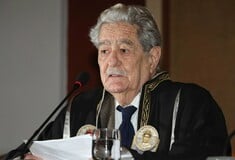
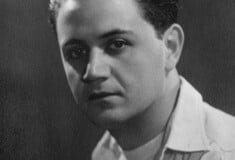




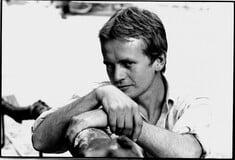




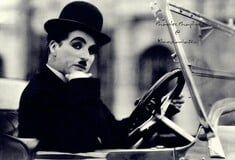
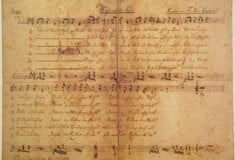
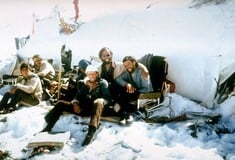



σχόλια